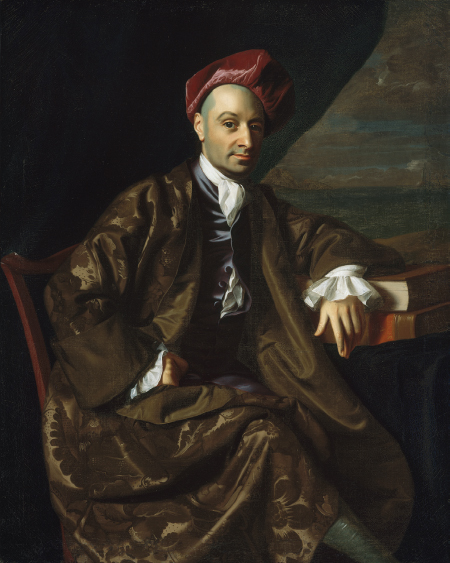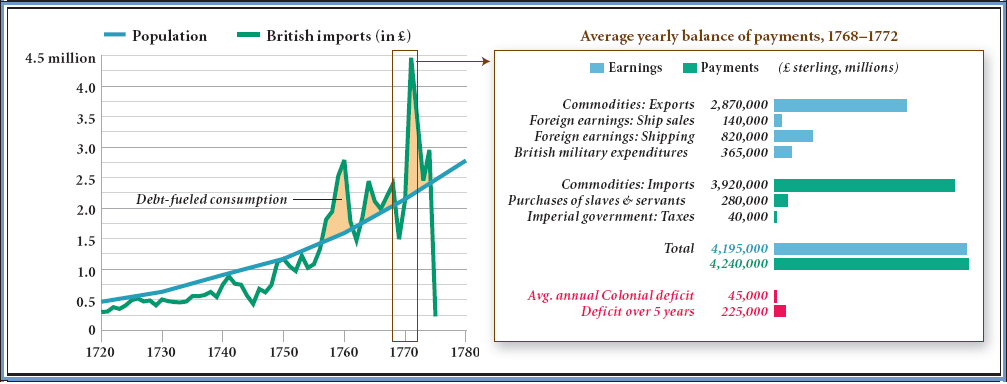America’s History: Printed Page 140
America: A Concise History: Printed Page 122
America’s History: Value Edition: Printed Page 119
British Industrial Growth and the Consumer Revolution

Britain owed its military and diplomatic success to its unprecedented economic resources. Since 1700, when it had wrested control of many oceanic trade routes from the Dutch, Britain had become the dominant commercial power in the Atlantic and Indian oceans. By 1750, it was also becoming the first country to use new manufacturing technology and work discipline to expand output. This combination of commerce and industry would soon make Britain the most powerful nation in the world.
Mechanical power was key to Britain’s Industrial Revolution. British artisans designed and built water mills and steam engines that efficiently powered a wide array of machines: lathes for shaping wood, jennies and looms for spinning and weaving textiles, and hammers for forging iron. Compared with traditional manufacturing methods, the new power-driven machinery produced woolen and linen textiles, iron tools, furniture, and chinaware in greater quantities — and at lower cost. Moreover, the entrepreneurs running the new workshops drove their employees hard, forcing them to keep pace with the machines and work long hours. To market the abundant factory-produced goods, English and Scottish merchants extended credit to colonial shopkeepers for a full year instead of the traditional six months. Americans soon were purchasing 30 percent of all British exports.
To pay for British manufactures, mainland colonists increased their exports of tobacco, rice, indigo, and wheat. Using credit advanced by Scottish merchants, planters in Virginia bought land, slaves, and equipment to grow tobacco, which they exported to expanding markets in France and central Europe. In South Carolina, rice planters used British government subsidies to develop indigo and rice plantations. New York, Pennsylvania, Maryland, and Virginia became the breadbasket of the Atlantic World, supplying Europe’s exploding population with wheat.
Americans used their profits and the generous credit extended from overseas to buy English manufactures. When he was practicing law in Boston, John Adams visited the home of Nicholas Boylston, one of the city’s wealthiest merchants, “to view the Furniture, which alone cost a thousand Pounds sterling,” he wrote. “[T]he Marble Tables, the rich Beds with Crimson Damask Curtains and Counterpins, the Beautiful Chimny Clock, the Spacious Garden, are the most magnificent of any Thing I have ever seen.” Through their possessions, well-to-do colonists set themselves apart from their humbler — or, as they might have said, more vulgar — neighbors.
Although Britain’s consumer revolution raised living standards, it landed many consumers — and the colonies as a whole — in debt (Figure 4.4). Even during the wartime boom of the 1750s, exports paid for only 80 percent of British imports. Britain financed the remaining 20 percent — the Americans’ trade deficit — through the extension of credit and Pitt’s military expenditures. When the military subsidies ended in 1763, the colonies fell into an economic recession. Merchants looked anxiously at their overstocked warehouses and feared bankruptcy. “I think we have a gloomy prospect before us,” a Philadelphia trader noted in 1765. The increase in transatlantic trade had made Americans more dependent on overseas credit and markets.

EXPLAIN CONSEQUENCES
Question
How did the prosperity of the British Empire improve and endanger the lives and interests of colonists?